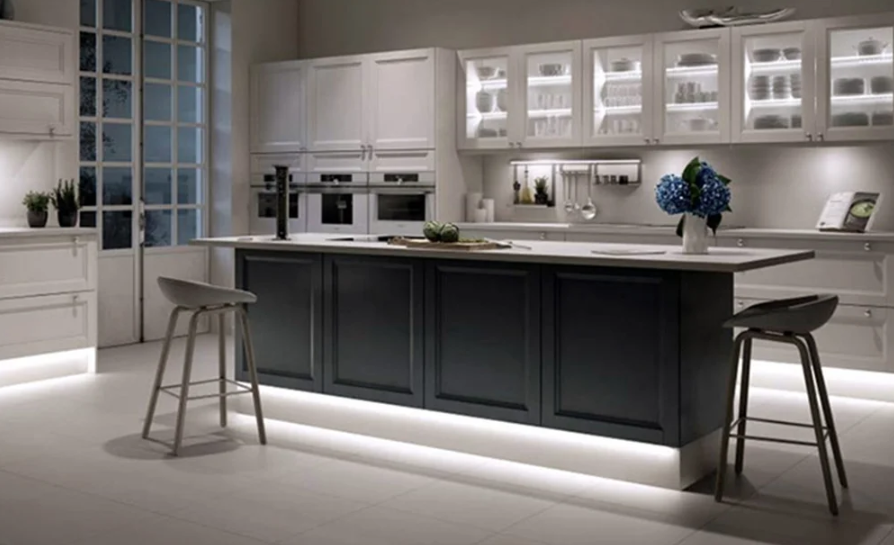Choosing The Right Kitchen Lights
Choosing the right kitchen lights is as much about creating a practical lighting design as it is about finding good-looking fixtures and fittings. The right kitchen lighting will not only ensure that your kitchen has the right ambience to make sure it’s a pleasure to spend time in it, but will also take a layered approach to ensure that there’s bright task lighting for when you need it.
As with most rooms, it’s recommended to include the three key lighting types, so when planning your kitchen design, consider how they will play a part in how users will interact with the spaces. Designing a lighting plan around how and when you use the kitchen will also make a huge impact on functionality, and help you to come to the most effective solution.
Let’s start with everyone’s favourite kitchen addition – the island.
A kitchen island is a workhorse which doesn’t just provide extra work surface, but can also feature hobs, sinks and various units underneath so highlighting with dramatic, yet functional lighting, will give it the attention it deserves. On the image above we can see 3 clear light sources – the natural light from windows and skylights, the main LED spot lighting, and the accent lighting above the island.
Lighting in this way really covers all angles, and coupled with a bright smooth work surface such as a granite worktop or quartz worktop, can help to reflect that light around the room, creating the feeling of a large, airy space. We see this again in the next image, but to a more dramatic effect. If your kitchen has no level above it, a skylight can be a great way to create a stunning wow-factor in the busiest room in your home.
Choosing the right light fittings isn’t the only decision you need to make — light temperature is also important, and deciding between cool light vs warm light will make all the difference in how your kitchen feels.
A lot of modern kitchens that feature a lot of sharp angles will benefit from a cool light, especially when coupled with monotones in the cabinet doors and work surface, whereas a kitchen with a lot of natural wooden tones, traditional furniture and more pastel colours may look and feel cosier with a warmer yellow lighting tone. Bear this in mind when you decide upon the main look for your new kitchen design.
If pendants or dangling chandeliers will get in the way of the practicality of a small kitchen and spotlights feel too cluttered or you have a problem with the practicality of fitting them, opting for LED strips in recesses and under units is a smart choice. This can give a real modern and striking look and can be relatively inexpensive these days. Using a proper diffusing strip over your LED strip will really help to give that glowing gradient look that has become very popular of late.
This option work really well with windowless kitchens, especially in apartments and space-saving applications. If you have room for an island, or even a row of base units that separate a living area in an open-plan design, adding some feature downlighting or pendants can achieve an even more striking look.
Hopefully this has given you some more ideas and inspiration when it comes to choosing the lighting design for your next kitchen plan. Remember, layered lighting that focuses on the working areas of the kitchen, getting the right warmth or light, and utilising natural light where possible, are the key things to focus on when creating successful lighting in your home.




